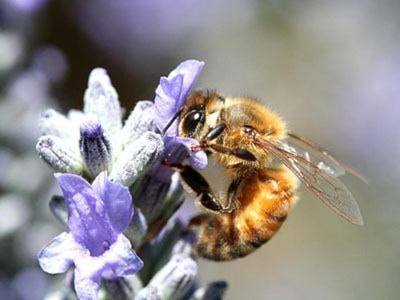I couldn’t help but notice the wild honeybees sourcing nectar last weekend in the mild weather we’ve been enjoying. It’s such a treat to see them, especially knowing they are under threat for survival. The loss of habitat, lack of nutrition, the misapplication of neonicotinoid insecticides, the parasitic mite Varroa destructor and many bacterial and viral diseases are all taking their toll. Wouldn’t it be nice if we could create even a small habitat around our homes to help them out, particularly in the winter months when food sources are scarce. There are some important winter flowering plants that provide nectar at this challenging time of year. It’s also interesting that wild honeybees need 80% nectar while mason bees prefer 90% pollen.
Winter flowering heathers seem to be number one on their list of importance. Just looking at heather beds on the weekend, you could see them crawling with bees. What a nice complement to nature. The beautiful Helleborus niger (Christmas Rose) is also an important source of nectar for bees. On a nice day, look at the blooms and you’ll discover bees inside. The newer varieties, H. ‘Joseph Lemper’, H. ‘Jacob’, H. ‘Shooting Star’, H. ‘Mahogany’ and H. ‘Cinnamon Snow’ are all in bloom outdoors now and are real allies for the bees.
Winter flowering trees have a great deal of importance for bees as well. The winter flowering ‘sasanqua’ camellias, Lonicera fragrantissima (fragrant honeysuckle) and viburnum ‘Pink Dawn’ can all be of great benefit to bees. Sweetbox or sarcococca, that is currently perfuming our gardens, is also a bee attractor; although it is not as popular as some of the others, it still helps a great deal. The winter flowering Mahonia ‘Winter Sun’ (Oregon Grape) is now flowering and open for bee visits. It’s also very helpful to our winter hummingbirds. Believe it or not, there is a winter flowering clematis, called C. cirrhosa ‘Freckles’, that has been flowering in protected spots all winter. It’s a great nectar producer too. Already, early snowdrops are coming up. At the same time, the far more essential yellow winter aconite is also popping up, and it’s a great source of nectar as well.
Our poor bees are struggling and anything we can do to help them out is really important. For the early bees, these plants are critical to their survival. Remember too: no bird feeders around these plants as birds are natural predators of bees.
